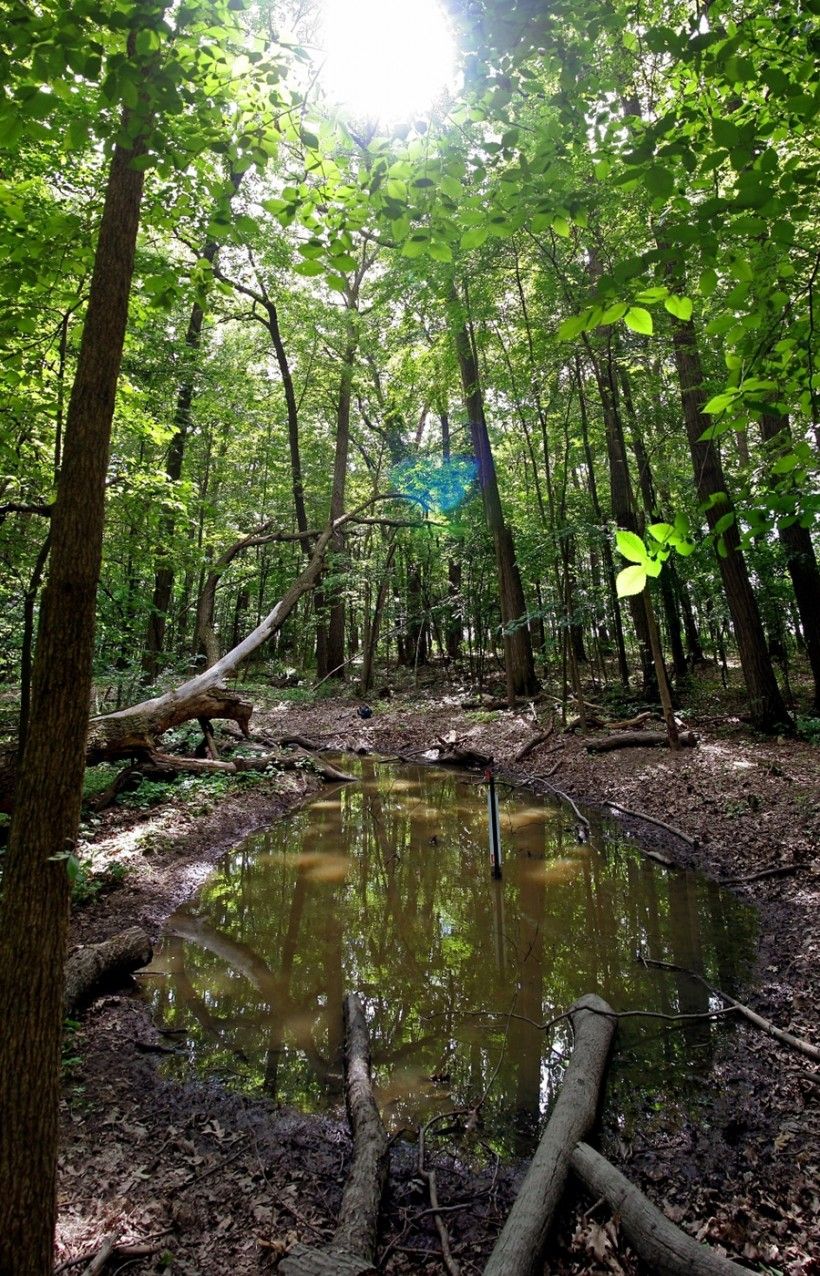
Vernal pools are by definition temporary, or ephemeral, ponds that usually disappear by mid-summer. This characteristic makes them an important habitat for several species of invertebrates and amphibians adapted to this unique breeding habitat, many of which are rare or endangered. The young of these species can develop without the threat of predators, such as the fish that live in permanent bodies of water.
The easiest way to identify a vernal pool is by the presence of both standing water on the forest floor and indicator species. If you see Eastern spadefoot toads, fairy shrimp, wood frogs or mole salamanders (Jefferson, marbled, or spotted) in a pond or depression, then you have encountered a vernal pool. During the dry phase (mid-summer to late winter), look for a depression in the landscape and water stains on leaf litter and tree trunks. This depression is the basin that floods to form the pool in spring.
Diversity of Species
During their abbreviated existence each year, vernal pools also provide a source of water and food for other woodland wildlife. The diversity of salamanders, frogs and aquatic arthropods in these pools provides a rich food source for songbirds and ducks, bats and other mammals, and turtles and snakes. The resulting variety of fauna assures a healthier, more balanced woodland. And despite their impermanence, vernal pools serve many of the same wetland functions as do larger and longer-lived bodies of water, including erosion control and groundwater recharge and purification.

Threats
Vernal ponds are declining in number due to development and loss of woodland, degradation and pollution, and destruction and clearing of vegetation along these and other wetlands. As a result, populations of species dependent on these habitats for breeding have also begun to decline. Timbering practices nearby can affect the integrity of a vernal pool in several different ways. Openings in the tree canopy can lead to a warmer and drier forest floor, limiting formation of vernal pools. Proximity to new woodland edges can expose the area to road and agricultural runoff, and sedimentation can result from nearby erosion, reducing the general protection and relative isolation afforded by the woodland surroundings. Pesticides and herbicides can settle in these small pools and harm or kill the sensitive aquatic life.
Help Protect Them!
Vernal pools should be protected and not disturbed. A 100-foot buffer surrounding the basin should also be protected from disturbance or clearing. Finally, keep in mind that many amphibians will travel from pool to pool, usually within a 1,000-foot corridor, and they rely on the woody debris and leaf litter within this area for cover as they travel.
For those without vernal pools on their property, an excursion to see these burgeoning spring habitats is well worth your while. We are fortunate to have numerous wooded preserves and parks in our region that host these burgeoning spring habitats. Our shared awareness of their value and sensitivity can help ensure their protection.